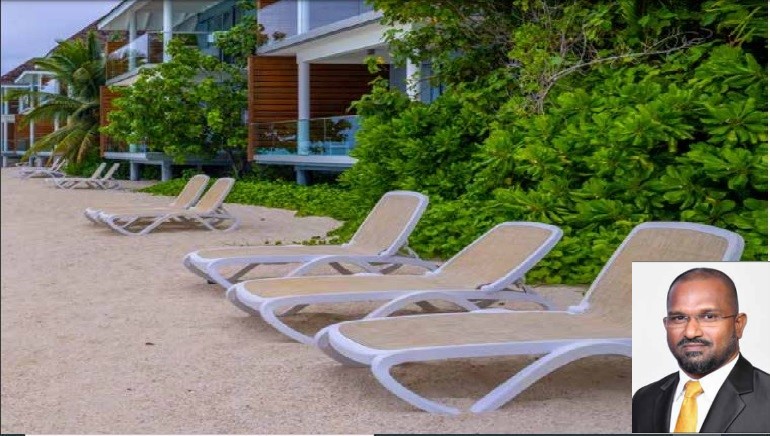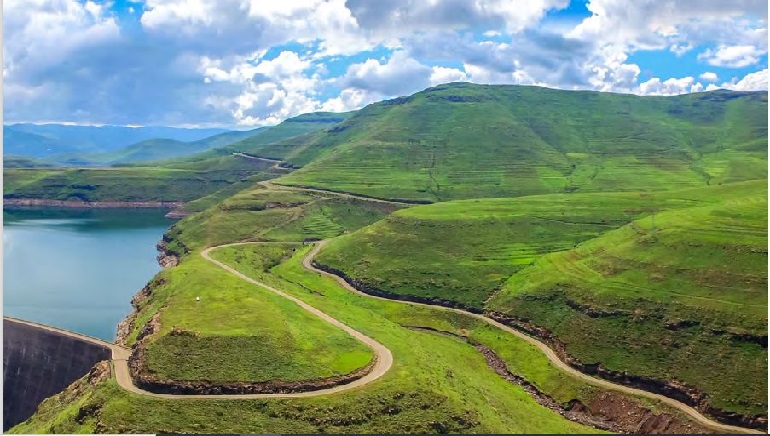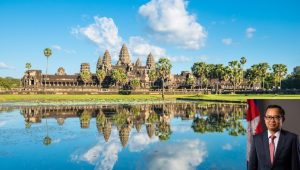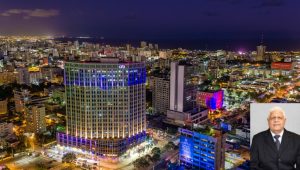LAND OF CULTURALLY-RICH DIVERSE ETHNICITIES
By Dr. Nawab Mir Nasir Ali Khan, Honorary Consul of Kazakhstan for the States of Telangana and Andhra Pradesh
One of the most ethnically and religiously diverse nations, Kazakhstan owes it to not only its history and nomadic culture but also its geography. Sharing its borders with 5 nations, it is a cultural melting pot of 131 ethnicities. Home to stunning nature, including the famed Altai Mountains and Kazakh steppe, as well as the Golden Man, the country’s own Tutankhamun, it offers the ultimate adventure
The Republic of Kazakhstan is a unitary state with the presidential system of government. Under the Constitution, Kazakhstan is a democratic, secular, legal and social state which recognizes the man, his life, rights and freedoms as the supreme values of the country. Located at the heart of Eurasia, appeared on the geopolitical map in December 16, 1991 when it gained independence. The name Kazakh, of Turkic origin, is thought to mean “free man” – which is appropriate in a land historically populated by freedomloving nomads. Nur-Sultan is the capital city of the country. Kazakh language is the official language of Kazakhstan. The Russian language has the status of the language of interethnic communication. The unit of currency used in Kazakhstan is tenge. It is the world’s ninth biggest country by size, and it’s more than twice the size of the other Central Asian states combined. The President of the Republic of Kazakhstan is the head of state, the highest political official, who determines the main directions of the domestic and foreign policy of the country and represents Kazakhstan on the international arena. The President is a symbol and guarantor of the national unity and the state power, inviolability of the Constitution, as well as the rights and freedoms of an individual and citizen. Kazakhstan has varied landscape stretches from the mountainous, heavily populated regions of the east to the sparsely populated, energy-rich lowlands in the west, and the industrialized north, with its Siberian climate and terrain, through the arid, empty steppes of the centre, to the fertile south. Ethnically the former Soviet republic is as diverse, with the Kazakhs making up nearly two-thirds of the population, ethnic Russians just under a quarter, and smaller minorities that include Uzbeks, Ukrainians, Chechens, and others. While many of its neighbors tend to be more influenced by Islamic countries, Kazakhstan has been largely shaped by Russian culture, literature and language.
THE RICH, DEVELOPMENTAL AND EVOLUTIONARY HISTORY OF KAZAKH PEOPLE AND CONSTANT INTERACTION OF NOMADIC LIFESTYLE HAVE LED TO A UNIQUE AND AUTHENTIC CULTURE OF KAZAKHSTAN
The Government implements executive powers, heads the system of executive bodies and exercises supervision of their activity. The Parliament of the Republic of Kazakhstan performs legislative functions and consists of two Chambers acting on a permanent basis: the Senate and the Majilis. The Senate is composed of deputies, two of whom represent each region of the country, as well as the cities of the national significance and the capital of Kazakhstan. Fifteen deputies of the Senate are appointed by the President with due regard to equal representation of national and cultural and other significant interests of the society. The Majilis consists of 107 deputies, nine of whom are elected by the Assembly of the People of Kazakhstan. The term of the powers of Senate deputies is six years; term of the powers of the Majilis deputies is five years. At the moment, there are three parties in the Mazhilis, including “Nur Otan” People’s Democratic Party, “Ak zhol” Democratic Party of Kazakhstan and Communist People’s Party of Kazakhstan. The country is divided into 14 administrative zones and has 3 cities of national significance.
A CULTURALLY RICH NATION
Being one of the most ethnically and religiously diverse nations, Kazakhstan owes this part to its geography and Soviet ethno-policies and the settlement of European migrants throughout the 20th century. The rich, developmental and evolutionary history of Kazakh people and constant interaction of nomadic lifestyle with settled people in South Kazakhstani ancient cities have led to a unique and authentic culture of Kazakhstan. With nearly 130 different ethnic groups and 17 different religious confessions, the ethnic Kazakhs accounted for 63% of the population, the Russians 23.7%, with the remainder being spread among Uzbeks, Ukrainians, Germans, Tatars, Uyghurs, Byelorussians, Azeris, Turks, Koreans, Dungans, Poles, Greeks, and other ethnic groups. Its predominant features through which Kazakhstan is recognized are:
Culture of horsemanship
The domestication of horses was first achieved on the territory of modern Kazakhstan. This marked the beginning of a new culture of horsemanship among the ancient nomads of Kazakhstan. Horsemanship culture changed Kazakh clothing, boots, and armor, and the nomads even invented the high saddles and stirrups.
Ancient Metallurgy
The nation rich in various mineral ores became one of the first centers of the establishment of metallurgy. The centers of mining production and smelting of bronze, copper, lead, iron, silver, and gold, and the manufacturing of sheet iron arose in ancient antiquity on the lands of Central, Northern, and Eastern Kazakhstan.
The Golden Man
The Golden Man, also referred to as the Golden Warrior, or as ‘Kazakhstan’s Tutankhamun’, was discovered in Issyk in 1969. It became the personification of the courage of the defenders of the land on which the ancestors of today’s Kazakhs lived. It depicts the highest-level artistic creations that still amaze the imagination. The skillful golden guise of a warrior indicates the confident mastery of the ancient masters of gold processing techniques.
Provenance of Turkic World
The majestic mountains of Altai not only decorate the land of Kazakhstan but were also the cradle of the Turkic peoples. It was here, in the middle of the 1st millennium, where the Turkic world was born. Today, it is the original centre of biodiversity of montane plant and animal species in northern Asia, a number of which are rare and endemic.
The Great Silk Road
The geographical uniqueness of Kazakhstan contributed to the emergence of transit corridors between different countries and civilizations. These land routes were transformed into the Great Silk Road system – a transcontinental network of trade and cultural ties between East and West, North and South of Greater Eurasia.
The Birthplace of Apples and Tulips
Kazakhstan is the keeper of the progenitor of all the Earth’s apple trees: the Sievers apple tree. It was this tree that gave the world one of the most common fruits of this time. Today there are more than 3 thousand varieties of cultivated tulips in the world, and most of them are “descendants” of the local flowers. Thirty-five types of tulips are native to Kazakhstan.
TOURISM OPPORTUNITIES
An array of majestic canyons, seamless deserts, arid plains, colossal glaciers, and ancient structures account for popular Kazakhstan tourist places making it a year-round destination. It is one of the must-visit countries on the bucket list of numerous travelers. Kazakhstan is wide to an extent that it encompasses 5 climate zones and has 2 time zones. It is the geographical diversity of the country that accounts for ultimate travel experiences. Due to this, it offers travel and tourism which include authentic cultural tourism, nature-based activities, including ecotourism, bird watching, etc. in national parks and protected areas, skiing or trekking in mountains, water sports, sunbathing and swimming in lakes and rivers.
NUR SULTAn (earlier ASTANA)
The wonderful city of Kazakhstan stands as the living example of the modernized nation and presents popular Kazakhstan tourist attractions. With plenty of corporate business centers and multi-story buildings around, the architecture of this city will mesmerize. From the top of the 105-meter tall Bayterek Tower, one can catch the magnificent panoramic view of the city. Museum of Miniatures and Seaquarium is the ideal place of attraction for all nature enthusiasts where over 2000 species of sea animals from different parts of the world can be spotted.
Almaty
As the biggest cultural hub of Kazakhstan, Almaty is known for its gorgeous setting and picture-postcard outdoor. It was the capital city of Kazakhstan till 1997. The snow-capped mountains guard the city displaying the city’s grandeur and making for the best backdrop ever. The Central State Museum here holds special importance because of the rich cultural heritage it houses.
Aktau
The four-decade-old city overlooks the great Caspian Sea and is among the most serene visiting places in Kazakhstan. Aktau means “white mountain” in Kazakh which may be due to its cliffs that overlook the Caspian. Cultural centers, concert halls, cinemas, and libraries from ancient times are spread all over the city. It is also known for its block address system. Almost no streets in Aktau have names; instead, addresses generally consist of three numbers: the district number, the building number, and the apartment number.
Taraz
Taraz is situated in the southern part of Kazakhstan. Formerly known as Auliye-Ata and Zhambyl, it lies at the junction of the Talas River and the Turk-Sib Railway. The city’s BabajiKhatun Mausoleum is known for its distinct sixteen-ribbed conical dome.
Lake Balkhash
The 15th largest lake in the world is located 600 miles to the east of Aral Sea and is a major source of hydroelectric projects in the country. It was once was a prominent place of breeding for marine life that included as many as 20 species of fish. Qaratal, Aqsū, Ayagoz, and Lepsi rivers feed the eastern part of the lake.
Baikonur
Baikonur is the world’s oldest and largest space launch facility. Baikonur Cosmodrome was one a secret missile testing site that happened to be a strategically important place for Russians. The desolate desert steppe of Kazakhstan was once the launchpad for Vostok 1 spacecraft in which Yuri Gagarin first set for the moon.
Tamgaly-Tas
Tamgaly-Tas literally means ‘written rocks’ as the rocks here are inscribed with beautiful images of Tibetan scriptures and Buddha. It is an openair sanctuary where religious rituals in Kazakhstan were held. 5,000 petroglyphs from the Bronze Age are still displaying the grandeur of the city.
























